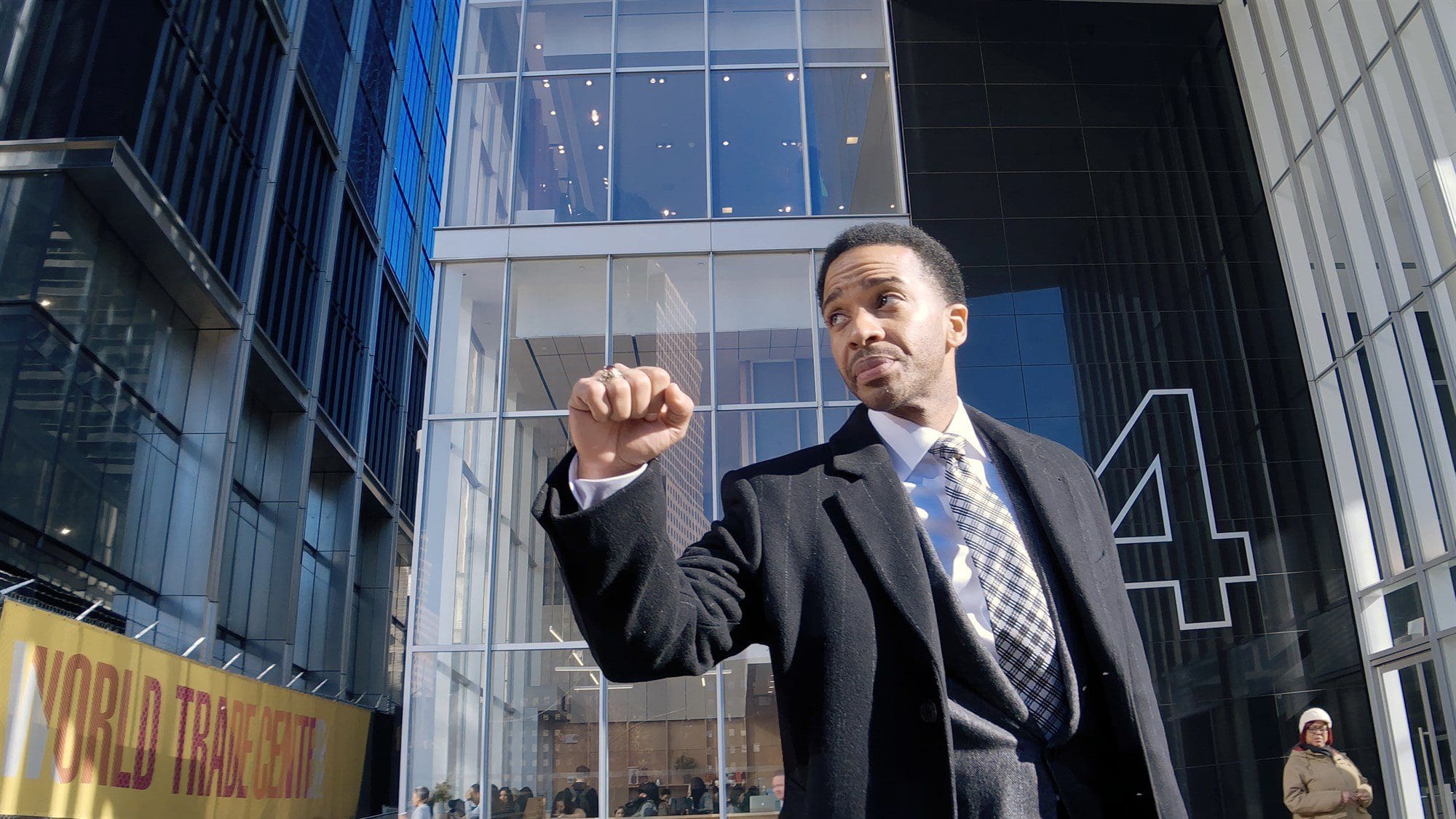
Shot on an iPhone.
There, it’s been said. Let’s move on.
I’d write that if filming with a phone didn’t have a higher purpose.
That seems like a disservice to Steven Soderbergh’s vision. How High Flying Bird was filmed is not a gimmick. Sure, it makes for buzzy headlines just like Unsane did last year. Without looking at any interviews with Soderbergh — the most versatile director working today and it’s not even close — about why he shot his two latest movies with a phone, it’s clearly an artistic choice just as before.
According to IMDb, his other 2019 release The Laundromat was shot with on the RED Epic. Soderbergh releasing two movies in as many years using an iPhone was not meant to disrupt the market or act as some grand commentary on the nature of creativity and art’s accessibility. Those are byproducts.
The process of High Flying Bird serves as meta-storytelling, elevating it to a new level.
Penned by Moonlight writer Tarrell Alvin McCraney, it’s the story of what happens behind the scenes of the NBA via a When Harry Met Sally structure featuring actual NBA players against the backdrop of a fictional league lockout. Moreover, it’s about how a sports agent exploits social media to scare the system.
Using the interviews with current NBA stars like Karl-Anthony Towns grounds High Flying Bird in reality. Soderbergh’s cameraphone truly tethers it down.
Just as the catalyst of the story is a viral video from a kid’s phone, the whole movie is in the same plane of existence.
André Holland reunites with both Soderbergh (The Knick) and McCraney (Moonlight) as Ray Burke, the agent of Erick Scott (Melvin Gregg) the number one draft pick who has fallen into financial troubles during a 25-week league lockout inspired by the 2011 NBA lockout in a dispute over revenue between owners and players.
I use “owners” instead of “front office” or “suits” or any other name of the decision makers in the league because the film is blunt enough to call a spade a spade. This is not just a story about rising to the top and taking over a system through talent alone. That talent is painted as abused labor. The suits upstairs that have caused a rift in the league are quite literally viewed as slave owners for players that are anything but slaves.
With terms like “neutral ground” thrown around to the offense to the strait-laced Spencer, the veteran organizer of a youth basketball program helping Ray, there’s a clear dialogue being opened about how athletes (predominantly black) are viewed.
When a pick-up game is set up between Erick and a feuding teammate goes viral, Ray starts a revolution to upset the balance of power. Read into the revolt as literal as you’d like, when the credits roll over as Sam (Zazie Beetz) reads through the copy of “The Revolt of the Black Athlete” that Ray gave Erick as “a bible” in the first scene, it’s a clear statement to rise up.
Athletes don’t need stadiums filled with team merchandise anymore. There’s a whole world living online now that is willing to pay a premium. There are streaming services like Netflix (is this the first time a Netflix movie talks about Netflix?) that will give a platform. All players need to do is stay true to their story and talent and the league will be scared of missing out.
As it’s set over a course of 72 hours and plays out in just 90 minutes, there’s nuance that’s left out of the discourse. But its bluntness is part of its charm and the cracks in narrative easily filled by Holland’s charisma. The same goes for Gregg who more or less reprises his American Vandal role.
Despite all the talent on-screen, I haven’t even mentioned Kyle MacLachlan or Zachary Quinto, Soderbergh holds his place as the strongest voice in the room.
Granted, the aesthetics that an iPhone provides is not at the same level as anything from RED or ARRI. There are low-light situations that sill don’t look clean but Soderbergh mostly avoids those pitfalls and uses them to his advantage when necessary, specifically playing with the shadows that obscure blackness. Its visual language is not on par with the rest of Soderbergh’s catalog, but he makes it a unique vision with purpose.
In the same way I’d argue that people are more critical of classic films because the technical quality is not up to modern standards, High Flying Bird succeeds on the same terms. It’s a testament to the writing and ensemble that the final product feels just as clean as its contemporaries using today’s most accessible camera.
To add, Soderbergh was done with the first cut in just under 150 minutes after filming wrapped. No word on how long his editing process typically lasts, but it is heavily expedited from a traditional production.
Overall grade: 8 out of 10

